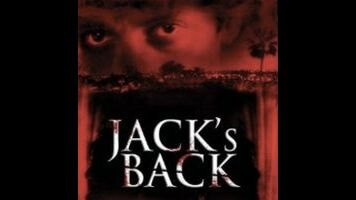The man behind Road House debuted with the nutso Jack The Ripper thriller Jack’s Back

On Scream Factory’s new DVD/Blu-ray set of the half-forgotten 1988 thriller Jack’s Back, the movie’s cinematographer Shelly Johnson talks about the days when writer-director Rowdy Herrington was just a gaffer, working with him on the horror anthology Nightflyers. After wrapping for the day, they’d sit around at a bar with their fellow crewman Tim Moore, and Herrington would talk about his idea for a serial killer thriller, set in Los Angeles exactly 100 years after the Jack The Ripper murders. Moore would go on to be Jack’s Back’s producer, and as Johnson puts it, all three men had spent so much time kicking around the project that they knew exactly what the film should be. They wanted the audience to feel like Herrington was just telling them this crazy story over a couple of beers.
Jack’s Back doesn’t quite pull that off. But it’s definitely more offbeat than the hundreds of other low-budget 1980s genre pieces that spent a few weeks at the multiplex before landing on some hard-to-reach video-store shelf. Its major selling point is the performance by James Spader, who at the time was a strikingly handsome bit player, best known for appearing in light youth-oriented comedies like Mannequin and Pretty In Pink. A year after Jack’s Back he’d appear in Steven Soderbergh’s left-field arthouse hit Sex, Lies, And Videotape, which would change Hollywood’s perception of what he could do, and set him up for a more eclectic career. But anyone who was paying attention would’ve already seen Spader’s range and charisma in Jack’s Back, where he plays both a cocky, idealistic doctor named John Wesford and the doc’s ne’er-do-well twin brother Rick.

















![HBO teases new Euphoria, Larry David, and much more in 2026 sizzle reel [Updated]](https://img.pastemagazine.com/wp-content/avuploads/2025/12/12100344/MixCollage-12-Dec-2025-09-56-AM-9137.jpg)






















